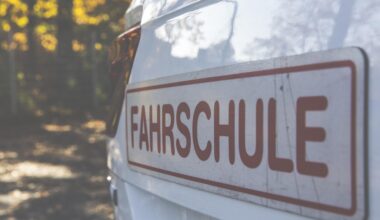Partner Drills to Develop Coordination for Golfers
Golf requires a unique combination of physical and mental abilities, with balance and coordination being essential components for success on the course. Engaging in partner drills can significantly enhance these skills, allowing golfers to work together to improve their performance. These drills not only cultivate coordination but also provide a fun and interactive way to practice. One fantastic drill involves a simple passing exercise where partners stand a few yards apart, tossing a light ball back and forth while maintaining proper posture. This encourages a focus on balance as players shift their weight while receiving and throwing the ball. Additionally, practicing hitting a target with the ball promotes targeting accuracy, which is essential in golf. Other drills include mirroring actions, where one player performs specific movements while the other mimics them, enhancing stability and coordination under varying conditions. This setup fosters teamwork and emphasizes the importance of consistent communication on the course, helping golfers establish a rhythm in their swings. As these drills evolve, players can increase intensity or decrease proximity, continually challenging their balance and coordination abilities.
Incorporating various tools can elevate these partner drills to new heights. One excellent resource is the use of balance boards or wobble boards during exercises. Partners can take turns standing on one of these boards while attempting to perform coordination drills, such as tossing or catching a ball. This adds an element of instability, forcing both players to engage their core muscles and improve proprioception, which is the awareness of body positioning. Introducing a timer for each drill can enhance competitive spirit, as partners strive to surpass each other’s achievements, fostering motivation and focus. Another dynamic drill involves using resistance bands while coordinating footwork—holding onto a band while performing lateral movements can effectively challenge stability and muscle responsiveness. Players can also work on their putting while the other player balances a lightweight object, such as a golf tee, on the back of their hand, promoting attention and control. Stronger coordination leads to better swing mechanics, ultimately translating into improved performance on the golf course. Consider integrating these tools and competitive aspects to keep each practice session fresh and engaging for both partners.
Specific Coordination Drills
To develop coordination effectively, specific partner drills can be organized to target various aspects of a golfer’s game. One effective drill is the “Toss and Swing” exercise. In this drill, one partner stands a designated distance away while the other takes a stance in their golf swing position. The partner at a distance will throw a lightweight ball towards the golfer, who will need to swing and connect with the ball using their golf club. This activity emphasizes timing and coordination, requiring golfers to incorporate their swings while remaining balanced. Additionally, using different sizes of balls—such as basketballs or smaller tennis balls—can create varying coordination challenges. Another essential drill is the “Reaction Ball Challenge.” In this exercise, players toss a reaction ball, which bounces unpredictably, forcing golfers to quickly react while maintaining balance and coordination. This enhances not only hand-eye coordination but also overall agility. Finally, incorporating shadow swings—where partners stand back to back and mimic swings—develops synchronization between both players, allowing for increased fluidity in body movements, a vital trait for successful golfing performance.
As workouts become more advanced, utilizing agility ladders can elevate partner drills further, enhancing speed and foot coordination. Partners can set up a ladder on the ground, executing various footwork patterns while conversing about golf strategies. Performing such exercises while simultaneously discussing game plans not only develops physical skills but also mental strategies, merging both aspects of golf. Incorporating counting or alternation in the drill stages—where one partner leads with specific patterns—can facilitate quicker adaptation to changing game scenarios. Another engaging drill involves synchronized movements, where two players execute different golf-specific activities in tandem with each other, such as practicing swings followed by step-back drills to improve backward stability. These activities also promote camaraderie and are highly beneficial for maintaining focus; players must work together as a team to maintain energy levels and encouragement while practicing. Such partner drills enhance communication, allowing golfers to interactively connect their thoughts, which contributes positively to their overall performance. As players develop coordination through these methods, they will likely notice noticeable improvements in their golfing technique during real play.
Balance-Focused Drills
Improving balance is integral for any golfer aiming to enhance their game. A primary partner drill focused on balance is the “One-Leg Stability Toss.” One golfer balances on one leg while their partner tosses a ball, requiring constant adjustments to maintain their stance while catching directly. Advancing this drill can involve longer toss distances, which demands greater stability. Another effective partner activity is the “Partner Hip-Hinge Drill.” In this drill, one golfer performs a hip hinge while the other tries to touch their toes without losing balance. Not only can this improve overall balance, but it also strengthens their lower back and primary muscles, cultivating a solid foundation for a golf swing. Furthermore, a partner could also hold a mirror while practicing swings to critique technique and posture simultaneously. Other balance drills can involve moving weights in unison, like golf clubs, while mimicking specific swing movements together. Such drills define consistent practice routines while building competitive spirit, which can be motivational. Engaging in various balance-focused drills can transform golfers into more competent players, leading to improved swing precision on the green.
To encapsulate their training outcomes, golfers may want to keep a log of their progression while practicing partner drills. Recording achievements such as successful catches during the “Toss and Swing” drill or tracking improvements in generating resistance bands can motivate players through positive reinforcement and goal-setting strategies. Setting small benchmarks encourages motivation, allowing golfers to compare their improvisation levels over time. This not only boosts confidence but also cultivates an understanding of how balance and coordination directly affect overall game performance. Partners can review each other’s logs, discussing strategies and milestones reached, which also strengthens their bond during workouts. The social aspect of these exercises is highly engaging; where players chat about their golfing experiences. Additionally, consistently practicing and improving balance through drills decreases the likelihood of injuries, promoting longevity in sports activities overall. Lastly, reinforcing the importance of encouragement fosters a nurturing environment where both partners can excel side by side. Such shared moments and reflection create an enjoyable atmosphere for enhancing coordination and effectiveness in golfing methods.
Building a Consistent Routine
Establishing a consistent workout routine is essential for integrating partner drills into the golfers’ regular practice. A balanced schedule covering various aspects of training—strength, flexibility, balance—enhances overall performance. The inclusion of coordination drills should be prioritized weekly, allowing golfers to focus on improving their balance through collaboration. It can be beneficial to select specific goals to target during each session, ensuring that the partner drills maintain excitement and intensity. Moreover, these drills can be split into warm-ups, skill development segments, and cool-down practices to render sessions effective and comprehensive. Engaging in partner drills will not only foster a sense of accountability between golfers but also create social networks, making them look forward to practice sessions. It’s suggested to alternate drilling partners periodically to enhance adaptability and exposure to varying styles and techniques, enforcing growth. Another key tactic includes motivational discussions about their golf experiences both before and after sessions, deepening relationships and creating a fun atmosphere during learning processes. Furthermore, ensuring various drills—executed through challenges or competitive variations setup—creates a dynamic feel in training, inspiring golfers to truly thrive in their golfing journey.
In summary, incorporating partner drills to enhance coordination and balance is an exciting approach for golfers preparing to improve their skills. By engaging in various interactive exercises and drills, golfers can effectively develop the essential qualities that contribute towards their performance during play. Remember to choose drills that excite both partners, encouraging a mix of physical methods with the integration of fun and social interaction. Commitment to consistent practice and the open-mindedness to apply feedback creates a powerful synergy. Each session can allow golfers to reflect on their growth, analyze weaknesses that need improvement, and celebrate their accomplishments to reinforce their motivations. As they adopt these practices, the anticipation and enjoyment of golf can transform into skills honed for success on the course. This combination of fun, competition, and commitment will surely yield positive results when golfers aim to enhance coordination, balance, and overall performance. Accepting challenges during drills can inspire improvement and perseverance while embracing teamwork. Engaging exercises that target various skills contribute significantly to a golfer’s journey, leading to satisfying outcomes on the greens.


